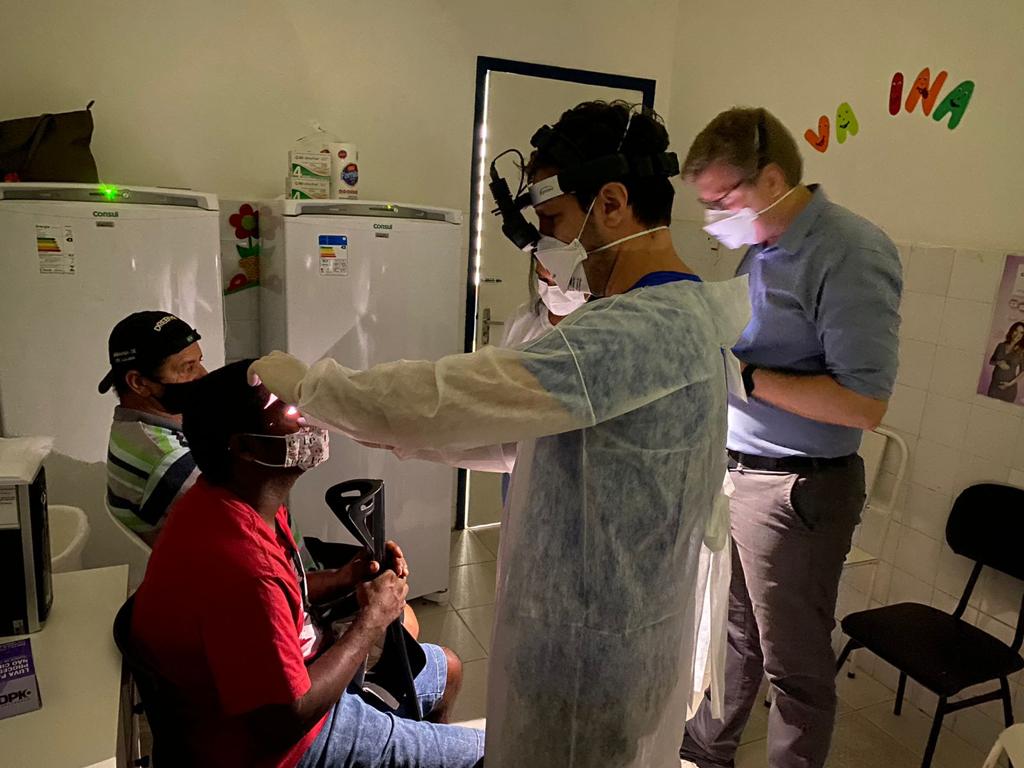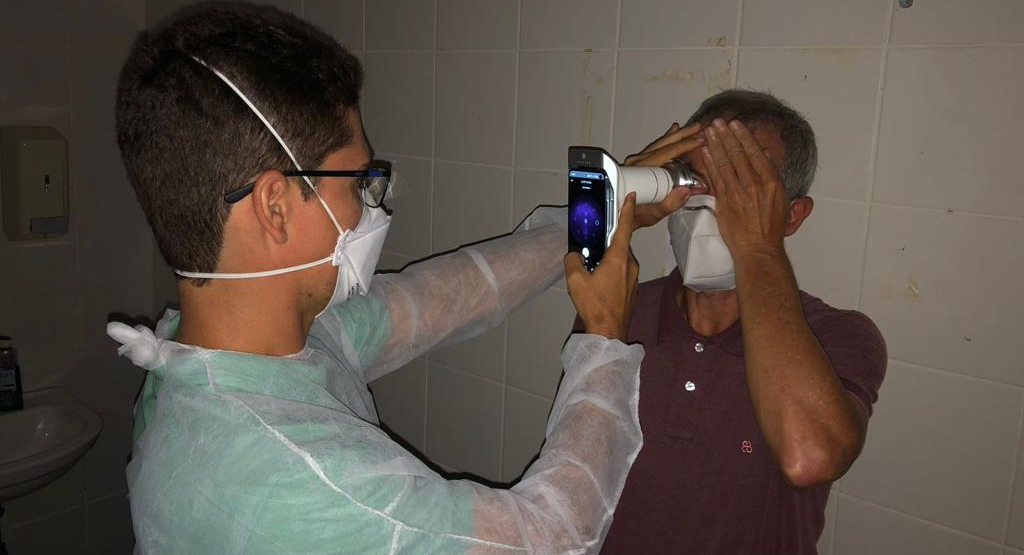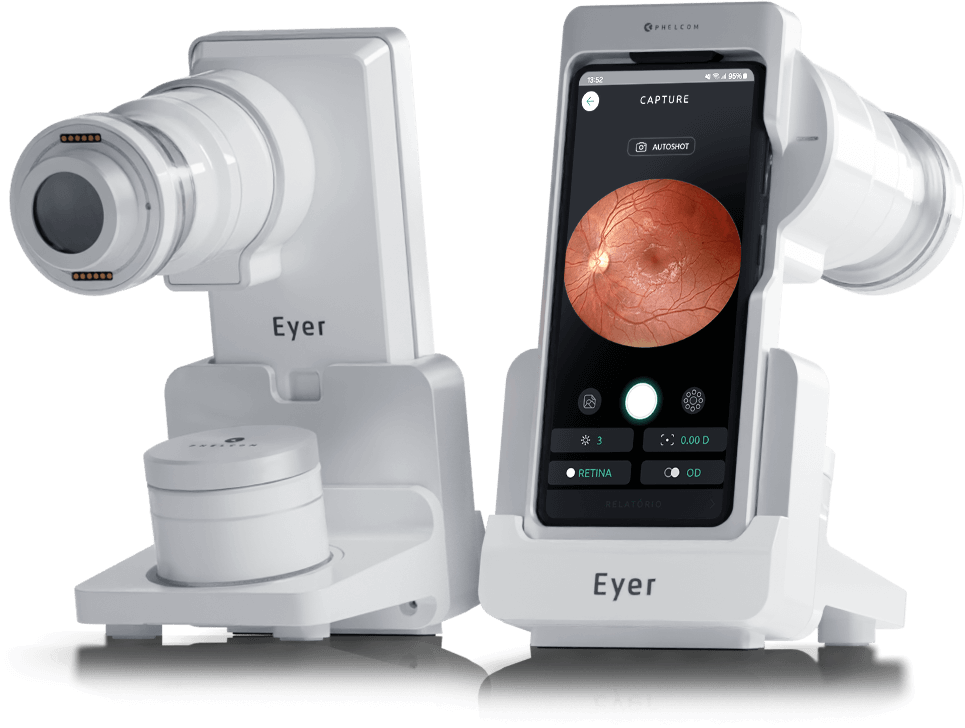By 2030, over half a billion people are expected to be diagnosed with diabetes. Currently, Brazil ranks as the sixth country worldwide with the highest population of diabetics.
One of the most common complications of the disease is diabetic retinopathy, which is also one of the leading causes of preventable blindness in adults.
Currently, there is no national diabetic retinopathy screening strategy by the Unified Health System (SUS). Thus, social initiatives for diagnosing the disease in communities with inadequate healthcare infrastructure are crucial.
For instance, we have the “Mutirão do Diabetes” in Itabuna, Bahia, and “Iluminar” in the countryside of Sergipe, supported by the NGO Retina Global. This American institution focuses on developing sustainable solutions for managing retinal diseases in underserved areas around the world.
The countryside of Sergipe has high rates of illiteracy and lacks specialized retinal care outside the capital, Aracaju. To illustrate, the average number of annual laser treatments performed between 2017 and 2022 is merely 126 for a state population of 2.3 million.
From September 2021 to March 2022, “Iluminar” used the portable retinal camera, Eyer for diabetic retinopathy screening in Itabi, Graccho Cardoso, Canindé de São Francisco, and Poço Redondo.

The device is connected to a smartphone and performs retinal exams within minutes, producing high-quality images, and uploads the images to the EyerCloud online platform, facilitating remote assessments.
The results of the pilot project were presented at ARVO 2023, one of the most renowned international ophthalmology conferences held in the United States in April.
The Study
One of the leaders of the “Iluminar” project, ophthalmologist Fernando Malerbi, explains that the aim of the retrospective observational clinical study was to evaluate the grading capacity of retina images obtained using a low-cost, non-mydriatic portable retinal camera — in this case, the Eyer — along with the use of artificial intelligence and telemedicine for diabetic retinopathy screening.
In total, 968 individuals with diabetes were evaluated:
- 65.9% were female;
- Average age of 60.3 ± 14.2 years;
- Duration of diabetes: 8.0 ± 7.2 years;
- 64.2% had systemic hypertension;
- 17.7% were using insulin;
- 28.5% had previously undergone fundus exams;
- 20.6% were illiterate;
- 50.6% had only completed primary education;
- 3.4% had health insurance.
A trained technician captured images without pupil dilation and then assessed image quality. Diabetic retinopathy requiring referral, defined as severe non-proliferative or proliferative retinopathy or the presence of diabetic maculopathy, was automatically detected by an embedded artificial intelligence system (EyerMaps). The AI was provided for clinical validation.
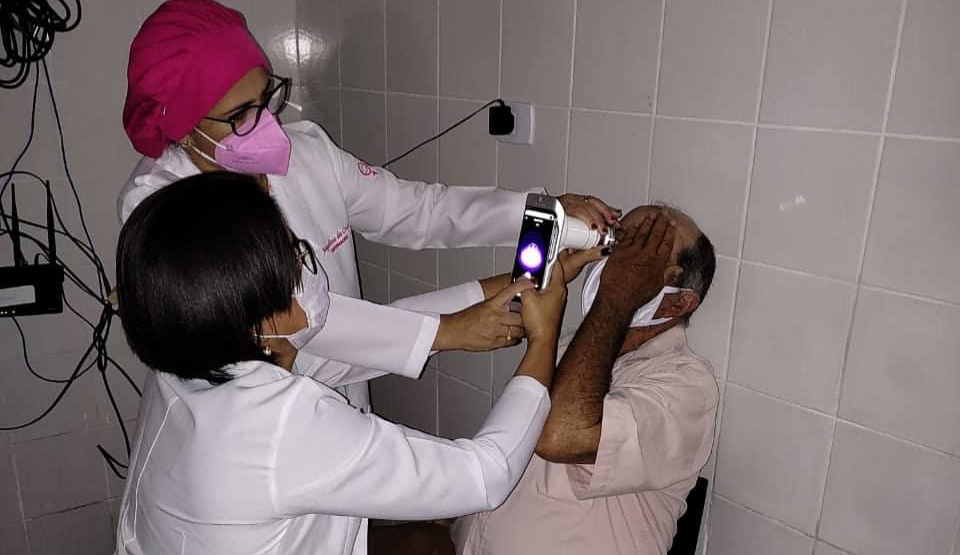
In a matter of seconds, EyerMaps indicated the possibility of retinopathy with a high sensitivity rate. Subsequently, all exams were evaluated by ophthalmologists.
Patients with inadequate images underwent pupil dilation and then a new assessment. Those with non-gradable images even after mydriasis, along with cases of referable diabetic retinopathy, were referred for ophthalmological evaluation.
Corneal opacities that hindered retinopathy classification were the exclusion criteria. The primary outcome measure was image gradability.
The Results
Grading was possible for 858 individuals (88.6%), with 85 of these (9.9%) showing referable diabetic retinopathy. Non-grading was associated with older age and longer diabetes duration.
Among patients with gradable images, 81% did not require pupil dilation. The need for mydriasis was associated with older age, longer diabetes duration, higher hypertension rates, and more severe retinopathy.
The strategy of utilizing a low-cost portable camera with embedded AI system and mydriasis when necessary achieved suitable images in 90% of cases within a resource-limited real-world environment. Malerbi emphasizes, “Avoiding unnecessary pupil dilation contributes to higher adherence to diabetic retinopathy screening programs.”
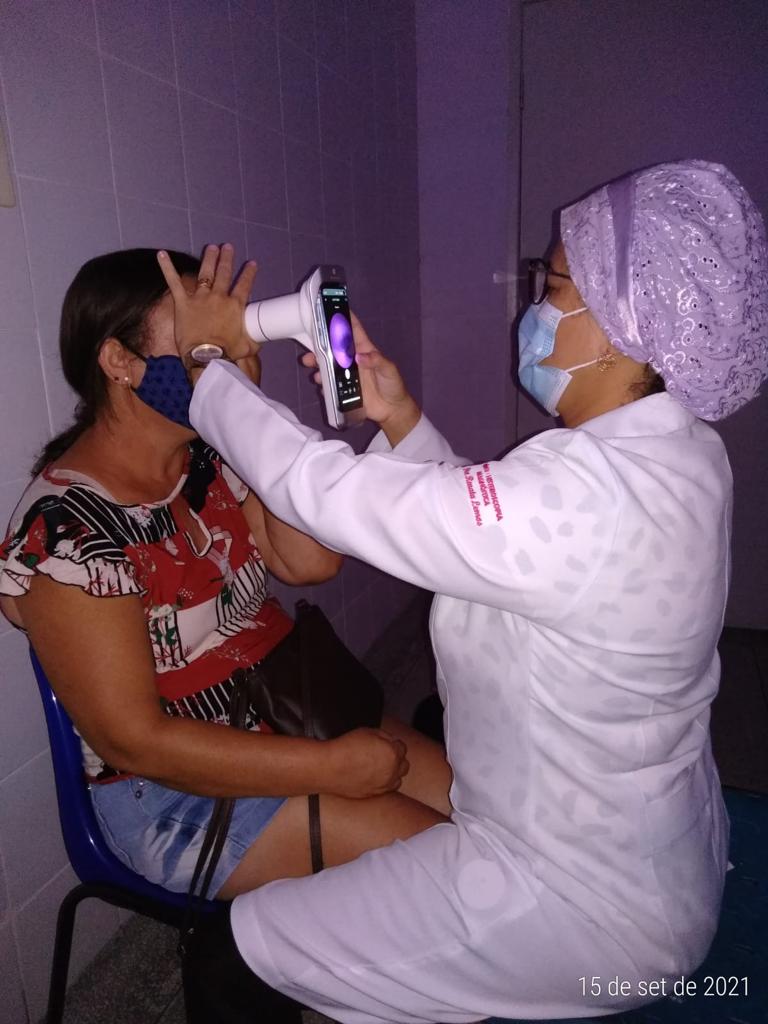
Enhanced Portability Facilitated Screening
This novel screening was conducted in primary care clinics located near patients’ homes to encourage participation.
Malerbi highlights that the portability of Eyer was a facilitator, along with connectivity. “We had remote experts evaluating images, sometimes in real time,” he explains. All of the exams taken were uploaded to EyerCloud.
Lastly, Malerbi emphasizes the availability of EyerMaps for use in social initiatives. “Partner ophthalmologists were instantly notified whenever EyerMaps identified a high likelihood of retinopathy. Thus, we could prioritize patients for confirmatory exams and, if necessary, treatment,” he shares.
The AI accurately detects any suspicions of retinal abnormalities. Within seconds of capturing the fundus image, if an abnormality is detected, the system generates a new image with an attention map (heatmap) highlighting potential retinal anomalies.
Synchronized with EyerCloud, it categorizes images and exams captured based on the likelihood of abnormalities using color markers:
- Green: Image or exam with low likelihood of an abnormality (up to 30%);
- Yellow: Image or exam with moderate likelihood of an abnormality (31 to 70%);
- Red: Image or exam with high likelihood of an abnormality (71 to 100%).
All patients diagnosed with diabetic retinopathy were referred for free laser treatment.
